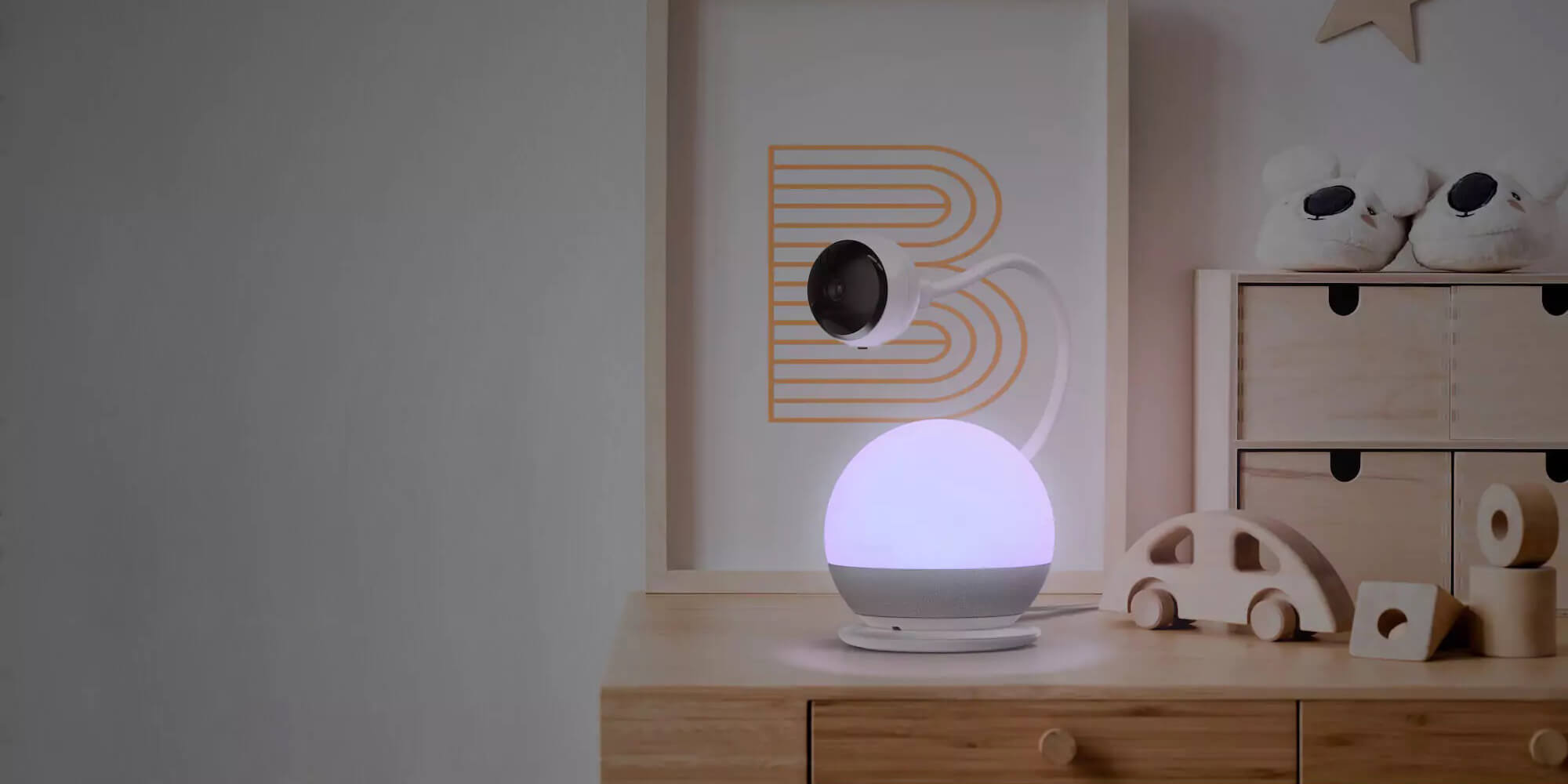Sleep training is a hot topic among new parents, and for good reason. Getting a good night's sleep is essential for both babies and parents, and sleep training methods can help achieve this goal. One popular method that has gained a lot of attention is the Ferber Method. In this article, we will dive into what the Ferber Method is, how it works, and its potential benefits and drawbacks. We will also discuss the controversy surrounding this method and provide some tips for parents who are considering using it.
What is the Ferber Method?
The Ferber Method, also known as the "cry it out" method, is a sleep training technique developed by Dr. Richard Ferber, a pediatrician and sleep expert. It involves teaching a baby to self-soothe and fall asleep on their own without the need for parental intervention. This method is typically recommended for babies who are at least 6 months old and have no underlying medical issues. We also recommend using a video baby monitor such as our Giraffe Cam Pro, to keep a closer eye on your child without interfering with the process. Another option is our Baby Mood Pro, which also includes a soothing mood light, which can actually assist with the process by creating a soothing environment for your child to fall asleep faster.
The Origin of the Ferber Method
Dr. Richard Ferber, the creator of the Ferber Method, is a well-known pediatrician and sleep expert. He developed this method based on his extensive research and experience in the field of pediatric sleep disorders. The Ferber Method was first introduced in his book "Solve Your Child's Sleep Problems," which was published in 1985. Since then, it has gained popularity among parents worldwide due to its effectiveness in teaching babies to self-soothe and sleep through the night.
The Basic Principles of the Ferber Method
The Ferber Method is based on the principle of progressive waiting. This means that parents gradually increase the amount of time they wait before responding to their baby's cries during the night. The goal is to teach the baby to self-soothe and fall asleep on their own without the need for parental intervention. This method also emphasizes the importance of a consistent bedtime routine and a conducive sleep environment for the baby.
How does it work?
The Ferber Method follows a specific schedule and routine that parents must follow consistently. The first step is to establish a bedtime routine, such as a bath, storytime, and lullabies. This routine should be calming and consistent every night.
Once the baby is in their crib, the parent should say goodnight and leave the room. If the baby starts crying, the parent should wait for a predetermined amount of time before going back into the room. This time interval should gradually increase each night. For example, on the first night, the parent may wait 3 minutes before going back in, then 5 minutes on the second night, and so on.
When the parent goes back into the room, they should not pick up the baby or engage in any stimulating activities. Instead, they should offer words of comfort and reassurance, such as "it's time to sleep" or "mommy/daddy is here." After a few minutes, the parent should leave the room again, even if the baby is still crying.
The goal of this method is to teach the baby to self-soothe and fall asleep on their own without the need for parental intervention. By gradually increasing the time between check-ins, the baby learns to fall asleep without relying on external factors.
The Ferber Method Schedule
The Ferber Method follows a specific schedule that parents must adhere to. This schedule involves gradually increasing the amount of time that parents wait before responding to their baby's cries. On the first night, parents may wait 3 minutes before going back into the room. On the second night, they may wait 5 minutes, and so on. This progressive waiting approach is designed to help the baby learn to self-soothe and fall asleep on their own.
Potential Benefits of the Ferber Method
The Ferber Method has gained popularity among parents for its potential benefits. Here are some of the potential benefits of using this sleep training method:
Better sleep for the baby
One of the main benefits of the Ferber Method is that it can help babies learn to sleep through the night. By teaching them to self-soothe and fall asleep on their own, they are less likely to wake up and cry for their parents in the middle of the night. This can lead to longer stretches of uninterrupted sleep for both the baby and the parents.
Improved sleep quality
In addition to helping babies sleep through the night, the Ferber Method can also improve the quality of their sleep. By learning to self-soothe, babies can transition more smoothly between sleep cycles, which can result in deeper and more restful sleep. This can have a positive impact on their mood, growth, and overall health.
More independence for the baby
Another potential benefit of the Ferber Method is that it can help babies become more independent. By learning to fall asleep on their own, they are less reliant on their parents to soothe them to sleep. This can also lead to a smoother transition to a toddler bed and eventually sleeping through the night without any assistance.
Development of self-soothing skills
The Ferber Method not only helps babies sleep better but also teaches them valuable self-soothing skills. These skills can be beneficial in other areas of their life as well, such as dealing with separation anxiety or coping with new and challenging situations.
Reduced parental stress
Sleep deprivation can take a toll on parents, both physically and mentally. By using the Ferber Method, parents can get a better night's sleep and feel more rested and refreshed in the morning. This can lead to reduced stress levels and a more positive parenting experience.
More time for parents
By teaching their baby to fall asleep on their own, parents can also gain more time for themselves in the evenings. This can provide them with much-needed downtime to relax, catch up on household chores, or spend quality time with their partner.
Potential Drawbacks of the Ferber Method
While the Ferber Method has its potential benefits, it is not without its drawbacks. Here are some of the potential drawbacks of using this sleep training method:
Crying can be distressing for parents
One of the main criticisms of the Ferber Method is that it involves letting the baby cry for extended periods. This can be distressing for parents, especially for those who are not comfortable with the idea of letting their baby cry it out. It can also be challenging to listen to your baby cry and not intervene, which can lead to feelings of guilt and doubt.
Emotional impact on the baby
Some critics argue that the Ferber Method can be emotionally distressing for the baby. They believe that leaving a baby to cry without immediate comfort can lead to feelings of abandonment and insecurity. However, supporters of the method argue that it teaches the baby to self-soothe and does not cause long-term emotional harm.
It may not work for all babies
Every baby is different, and what works for one may not work for another. The Ferber Method may not be effective for all babies, and some may continue to struggle with sleep even after following the method. This can be frustrating for parents who have put in the effort and time to implement the method.
Potential for sleep associations
While the Ferber Method aims to eliminate negative sleep associations, it can sometimes create new ones. For example, a baby may start associating bedtime with crying and distress, which can make it more difficult for them to fall asleep in the future.
It may not address underlying issues
The Ferber Method focuses on teaching babies to self-soothe and fall asleep on their own. However, it may not address any underlying issues that may be causing sleep problems, such as reflux, allergies, or sleep apnea. It is essential to rule out any medical issues before starting any sleep training method.
Requires consistency and commitment
The Ferber Method requires a high level of consistency and commitment from parents. It can take several nights or even weeks for the baby to adjust to the new sleep routine. This can be challenging for parents, especially if they are already sleep-deprived and stressed.
Conclusion
The Ferber Method is a popular sleep training method that has its share of supporters and critics. While it may not be the right fit for every family, it has helped many parents and babies get a better night's sleep. It is essential to consider the potential benefits and drawbacks and consult with a pediatrician before starting any sleep training method. With consistency and patience, the Ferber Method can be an effective way to help your baby learn to sleep through the night and develop healthy sleep habits. However, it's important to remember that every baby is unique, and what works for one may not work for another. Therefore, it's crucial to be flexible and willing to try different approaches until you find what works best for your baby and your family.
By using smart baby monitors, you can keep a closer eye on your little ones while using the Ferber Method, without actually interfering with the method itself.













